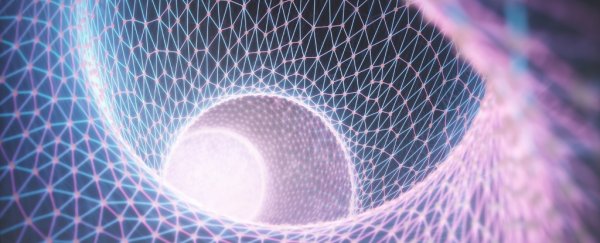The Hubble Constant is a unit used to describe expanding spacetime, which is defined as speed (kilometres per second) over a given distance (per megaparsec). As part of an equation called Hubble's Law, it describes an accelerating expansion of distance between all points in the Universe.
In theory, the constant's value is calculated by combining the velocity of distant galaxies as they appear to move away from us, along with an estimate of their distance.
Carrying out this measurement in practice has been easier said than done. Different methods for determining the Hubble Constant's true value have produced subtly - but significantly - different answers, much to the frustration of physicists.
What are the methods for calculating Hubble's Constant?
One effective way of measuring the velocity of a retreating object is to look at its colour and then compare it with what you think its colour should be.
Just as a siren's tone has a lower pitch as it moves away from your position at high speed, an object's colour will have a 'lower pitch', or redder hue, as its light waves are stretched by its relative motion.
When this 'redshift' phenomenon was applied to distant galaxies early in the 20th century, it appeared as if many more were retreating from us than we might otherwise expect.
The American astronomer Edwin Hubble took a closer look at this claim of runaway galaxies in 1929, paying closer attention to their distances.
He determined the further away the galaxy, the faster it appeared to retreat, establishing the groundwork for a theory on the Big Bang and the accelerated expansion of the Universe.
Hubble's early estimates on this constant rate of expansion were in the order of 500 km/s/Mps. But there was still a lot of imprecision in how we measured those extraordinary distances.
Subsequent methods have made use of various tools to determine distances and rates of movement between different light sources.
Some efforts have continued to rely on pulsating stars with a known intrinsic brightness called Cepheid variable stars, using them as a way to calibrate more distant lights like supernovae. Others have measured the stretched-out glow of background radiation from the early Universe, left over from the Big Bang. These improved methods have given us a value for the Hubble Constant that's closer to around 70 km/s/Mps.
Unfortunately, depending on the basis of the method used, the exact figure could be anywhere from around 67.4 (km/s)/Mpc (give or take a kilometre per second) to a number in the ballpark of 73.5 (km/s)/Mpc.
Instead of narrowing in on a 'right' answer, ever-more-accurate tools for measuring the constant have come up with incredibly precise, but still very different values for the Universe's expansion.
Why is the Hubble Constant so hard to calculate?
It's not clear why there are such dramatically different values for the Hubble Constant. While the results all seem reliable, it's clear we're missing something that puts each figure into context.
It's possible our position in the Universe isn't as boringly average as we might assume. If we sat inside a unique pocket of space, such as a bubble, the different methods for calculating the Hubble Constant might be skewed by our rather special viewpoint.
Deviations in the shape of the Universe could also change how we interpret the results of such measurements.
We might also consider the fact that the Hubble Constant may not need to be constant, with changes over time or in space arising from various interactions (some potentially not yet realised) to come up with different values.
There is also the vanishingly slim possibility that there really isn't a difference after all, with additional data potentially revealing these odd clusters of figures could just be an unlikely and very unlucky coincidence.
All Explainers are determined by fact checkers to be correct and relevant at the time of publishing. Text and images may be altered, removed, or added to as an editorial decision to keep information current.
